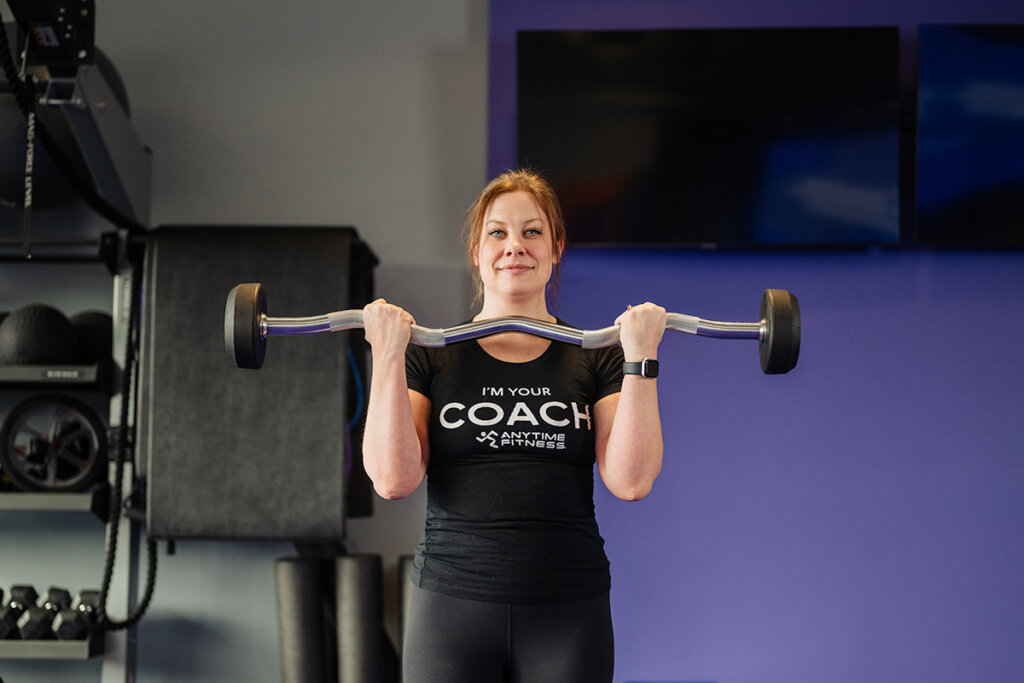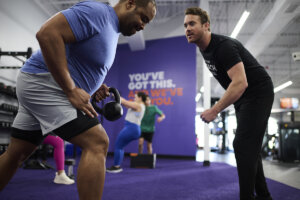It’s no secret that strength training is an important part of a well-rounded fitness routine, with benefits like higher metabolism, stronger bone mass, and improved posture and mood. Some of the most common reasons for strength training include increasing muscle mass, improving muscle tone, or supporting healthy muscular development and function — but have you ever considered the impact of muscular endurance training? Building endurance can help maximize your gains and improve your overall performance. Let’s talk about the importance of endurance and how to incorporate muscular endurance exercises into your gym routine.
We’ll cover:
- Muscular strength vs. muscular endurance
- The importance of muscular endurance
- How to build muscular endurance
- Muscular endurance workout for arms and chest
- Muscular endurance workout for back and legs
Muscular strength vs. muscular endurance
First: Is there a difference between muscular strength and muscular endurance? Yes!
- Muscular strength: The amount of force you can exert in a single effort.
- Muscular endurance: The ability to lift a load or perform a movement repeatedly over time without exhaustion.
Muscular strength and muscular endurance are both important for optimal muscular function and fitness, but if you’re training for a specific sport or activity, you may focus on one more than the other. For example: a cross-country skier may spend more time endurance training while someone who is powerlifting will focus on strength training after building a foundation of endurance.
If you are only able to perform a small amount of reps before you reach fatigue, you may lack muscular endurance. Fortunately, you can train your muscles to have more stamina over time, just like you can train your cardiorespiratory system to endure longer bouts of cardio exercise.
The importance of muscular endurance training
Muscular endurance allows you to perform resistance training workouts without exhausting quickly, which is why muscular endurance training comes first in a periodized training program. Endurance is needed to perform the increased volume (more weight lifted for more sets) required for strength training.
If your goal is to gain strength, muscle mass, or both, you need to build a solid foundation before progressing to strength training phases like hypertrophy (size) training or maximal strength training. Before lifting moderately heavy weights for 3–4 sets of 8–12 reps (which is recommended for developing muscle mass), doing higher reps with lighter weights builds the stability and endurance your muscles need. If you were training for a marathon, you wouldn’t run 26.2 miles on your first training run; you’d work up to that distance over time. The same goes for strength training — progressively increasing the demand you place on your muscles will help you lift longer and heavier over time.
How to build muscular endurance
Building muscular endurance requires you to put your muscles under a load over an extended period of time. To achieve this, we recommend working the same muscle group for two exercises back to back, also called a superset. For example: To build muscular endurance in the chest muscles, perform a superset that includes two exercises that primarily work the pectoralis major (e.g., bench press followed by push-ups). To build muscular endurance in the back muscles, such as the latissimus dorsi, pair a pull-up (or assisted pull-up) with a lat pulldown.
Start by performing a higher number of reps (12–20) using light to moderately heavy weights. With a higher number of reps to perform before resting, you’ll test the ability of your muscles to endure the increased duration of exercise. Once you’ve reached an adequate level of muscular endurance, you can progress to hypertrophy training by doing 6–12 reps with moderately heavy weights.
To maximize strength, we recommend a low rep range (1–5) with heavy weights. This type of training is different from muscular endurance. In this case, your muscles are maximally loaded for fewer reps rather than repping out with lighter weights.
Muscular endurance workout for chest and arms
Now, let’s put it all together in a chest and arm workout. Use these six muscular endurance exercises to improve your stamina so you can perform better and lift heavier, longer.
This muscular endurance workout features three supersets that each target a different muscle group. You’ll perform both exercises in each superset back to back with a 1-minute rest between each superset.
Superset 1
Muscles worked: Pectoralis major, anterior deltoids, triceps
Bench press
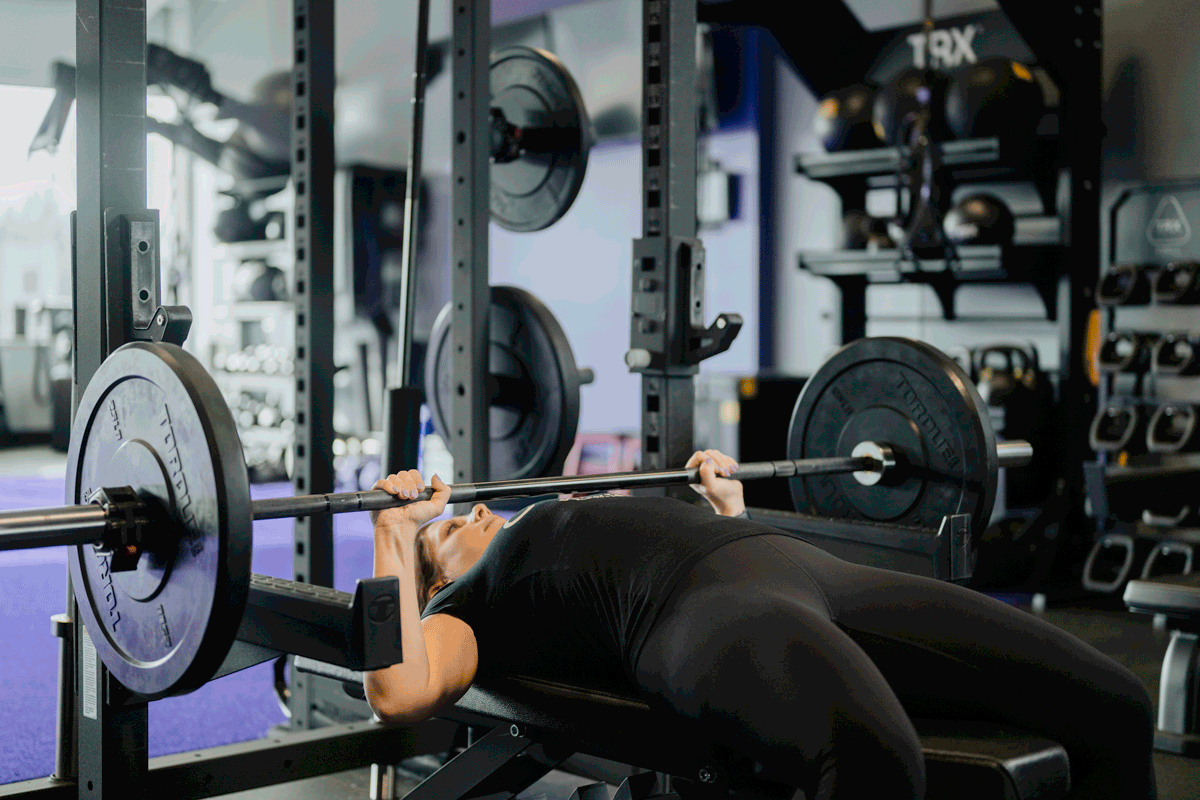
How to:
- Lie on your back on a flat bench, holding the weight with a grip slightly wider than shoulder-width.
- Bend the elbows and lower the weight to mid-chest.
- Press the barbell back up to a straight arm position.
Push-ups
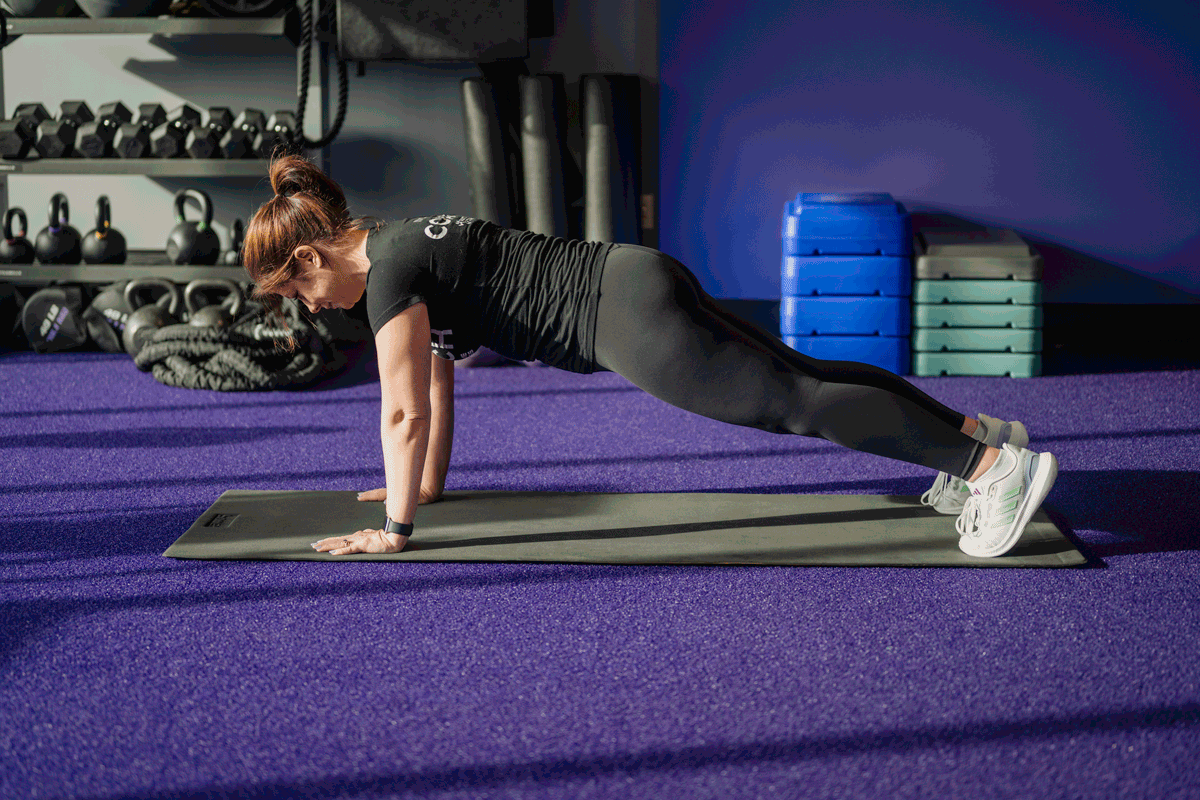
How to:
- Lie on the ground, and use your toes and hands to support your body. Keep your elbows bent, with your chest nearly touching the floor.
- Push up to a straight arm position.
- Lower your body back to the start position and repeat. Keep your back flat and your hips in line with your shoulders throughout.
Superset 2
Muscles worked: Anterior and lateral deltoids, trapezius, triceps
Dumbbell overhead press
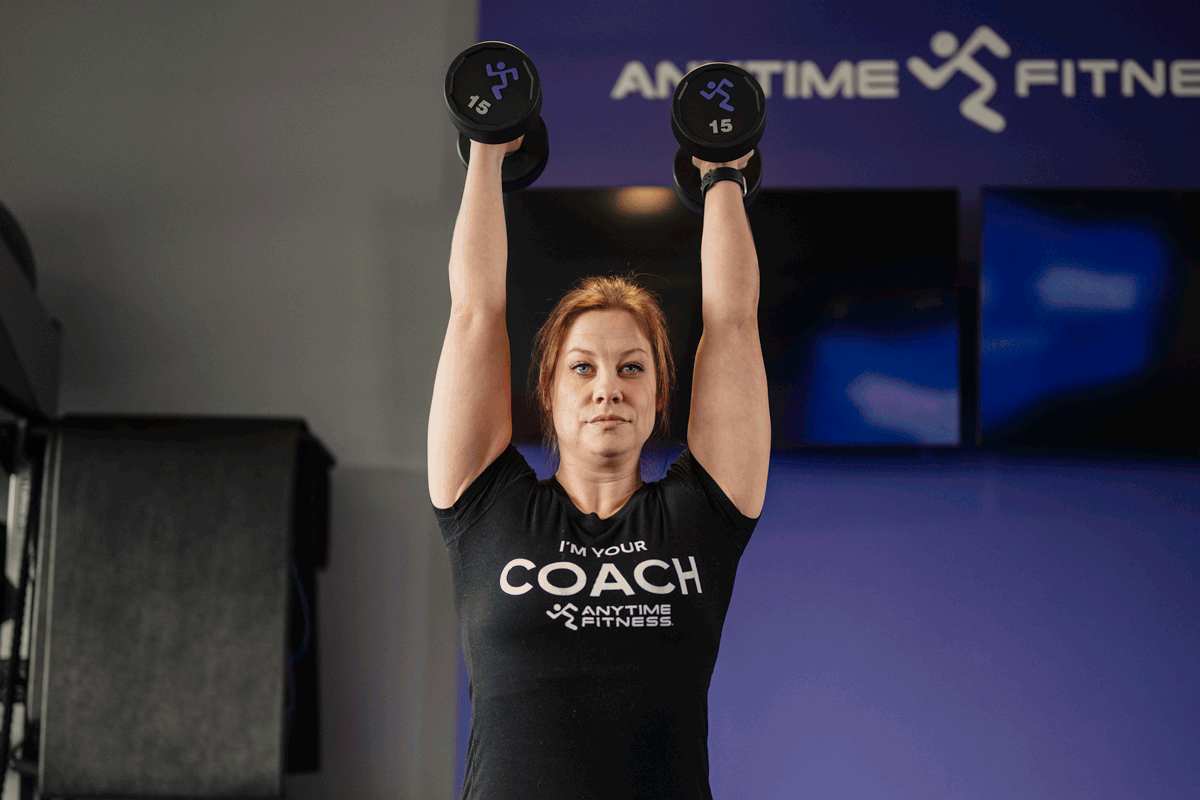
How to:
- Stand upright, holding dumbbells at shoulder height with your elbows bent and your palms facing forward.
- Slowly press the dumbbells overhead, extending your arms fully. Keep your back flat throughout the movement.
- With control, lower the dumbbells back to shoulder height.
Dumbbell lateral raise
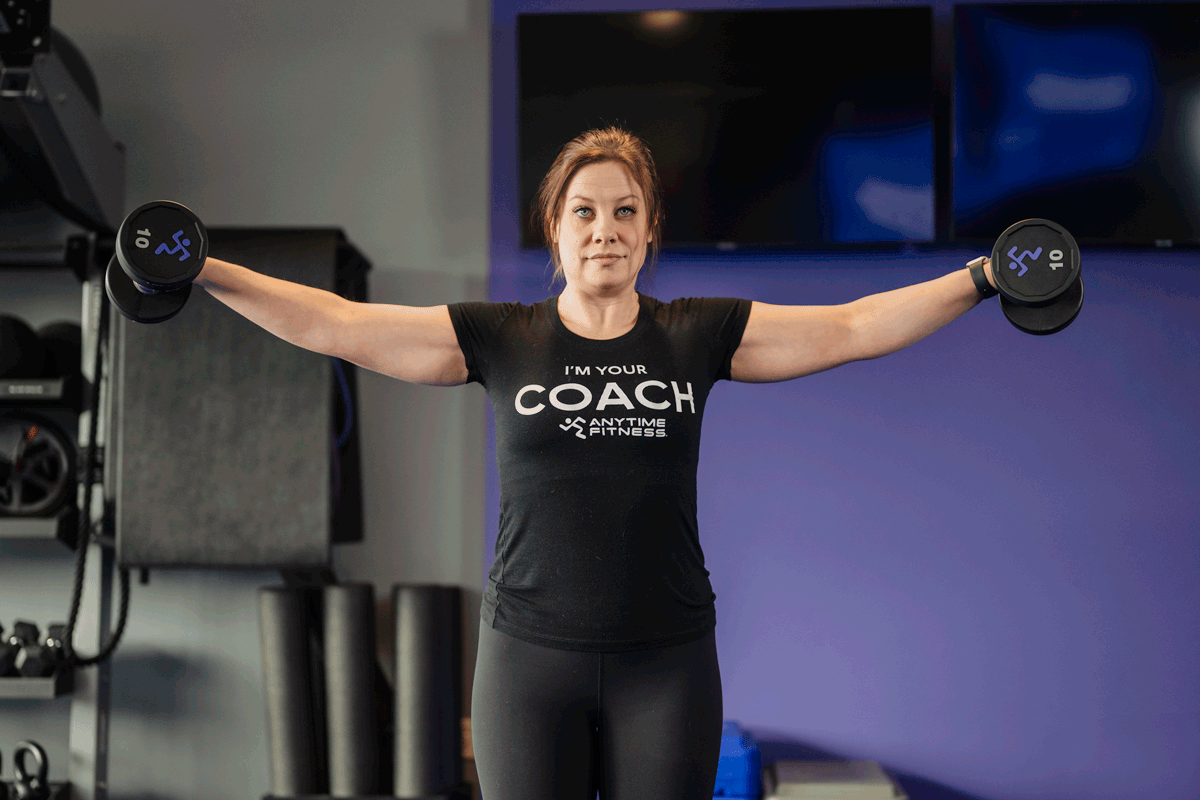
How to:
- Stand upright, holding dumbbells at your sides with your arms straight.
- Raise the dumbbells up and outward to the sides to shoulder height, keeping your arms straight or with a slight bend at the elbows.
- Slowly lower the dumbbells back to the starting position.
Superset 3
Muscles worked: Biceps, lats, teres major, posterior deltoids
Chin-ups
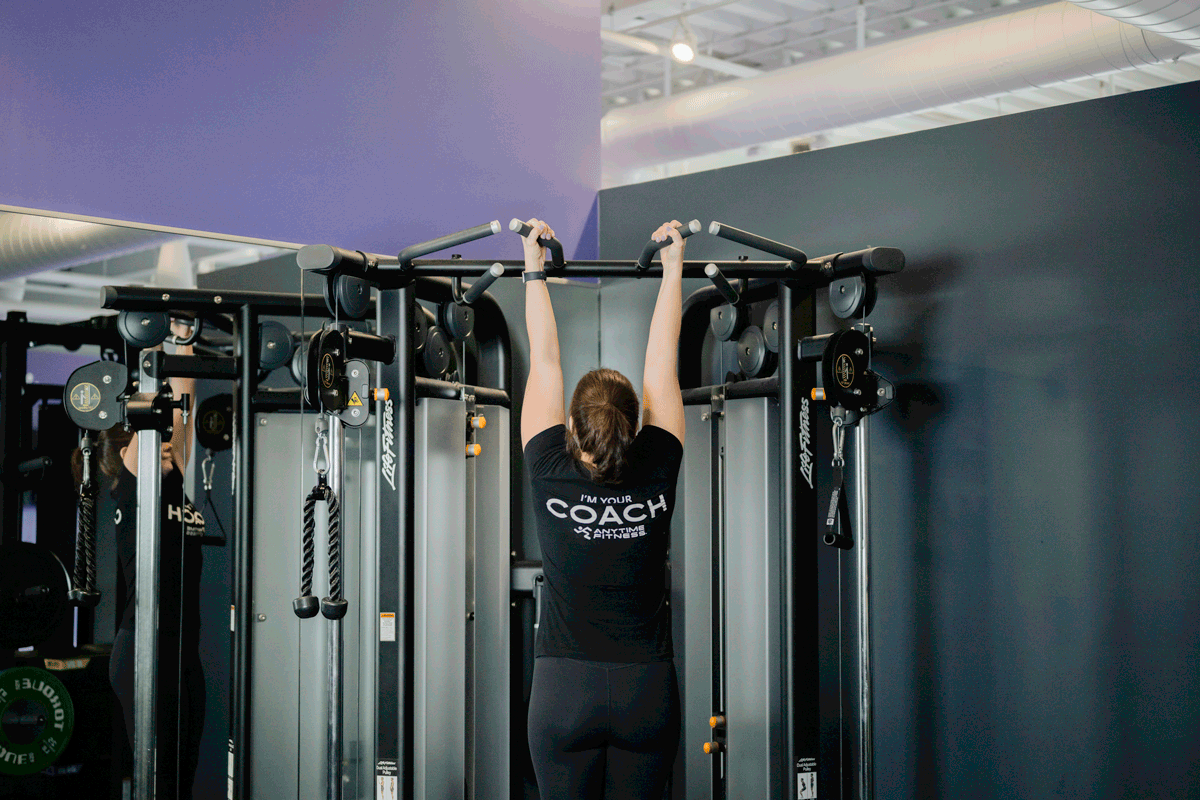
How to:
- Hang from a bar with a shoulder-width underhand grip and straight legs.
- Pull your shoulders and elbows down and back, lifting your body to the bar.
- Lift up until your chin reaches over the bar.
- Lower back down, extending your arms fully.
Barbell bicep curl
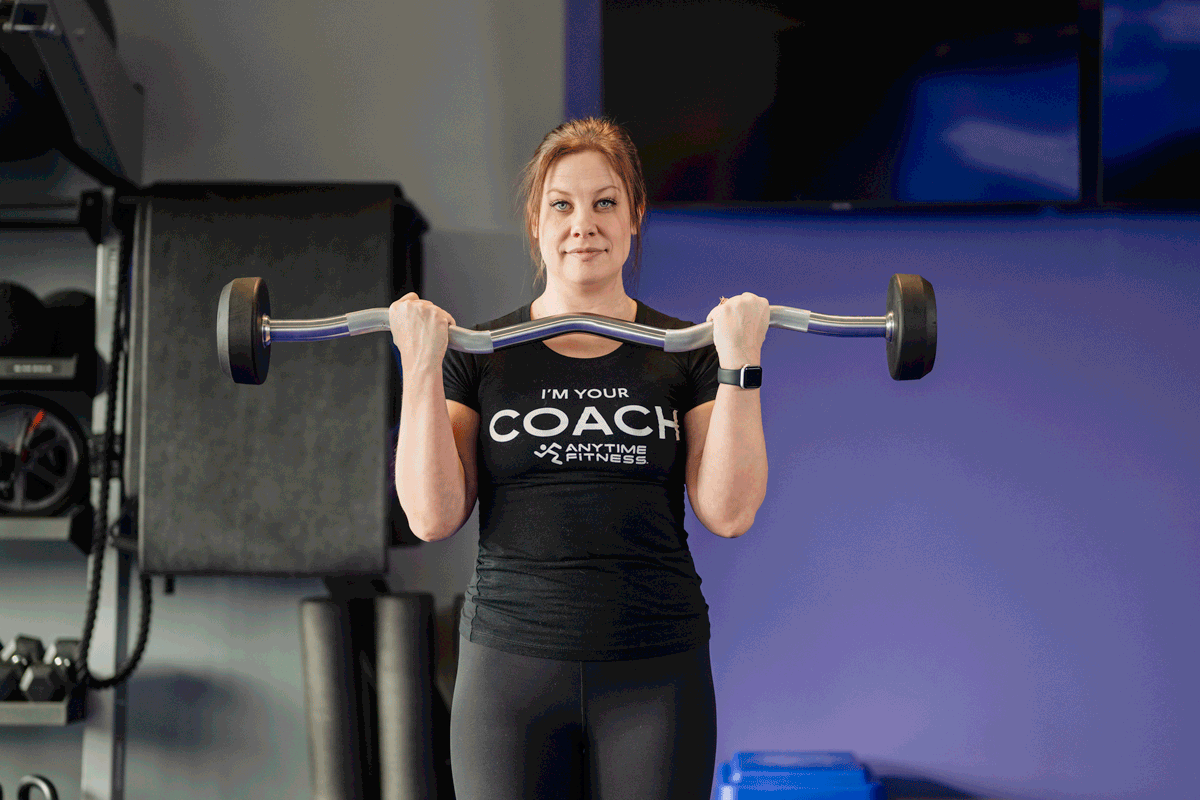
How to:
- Hold a barbell with an underhand grip. Keep your hands shoulder-width apart and your arms straight.
- Raise the barbell up to shoulder height, keeping your elbows at your sides.
- Lower the barbell back to a straight arm position. Do not rock your upper body back and forth as you lift and lower the barbell.
Muscular endurance workout for back and legs
Similar to the muscular endurance workout for arms and chest, this back and leg workout features three supersets with two muscular endurance exercises performed back to back. Perform each superset once.
Superset 1
Muscles worked: Quads, glutes, hamstrings
Goblet squat
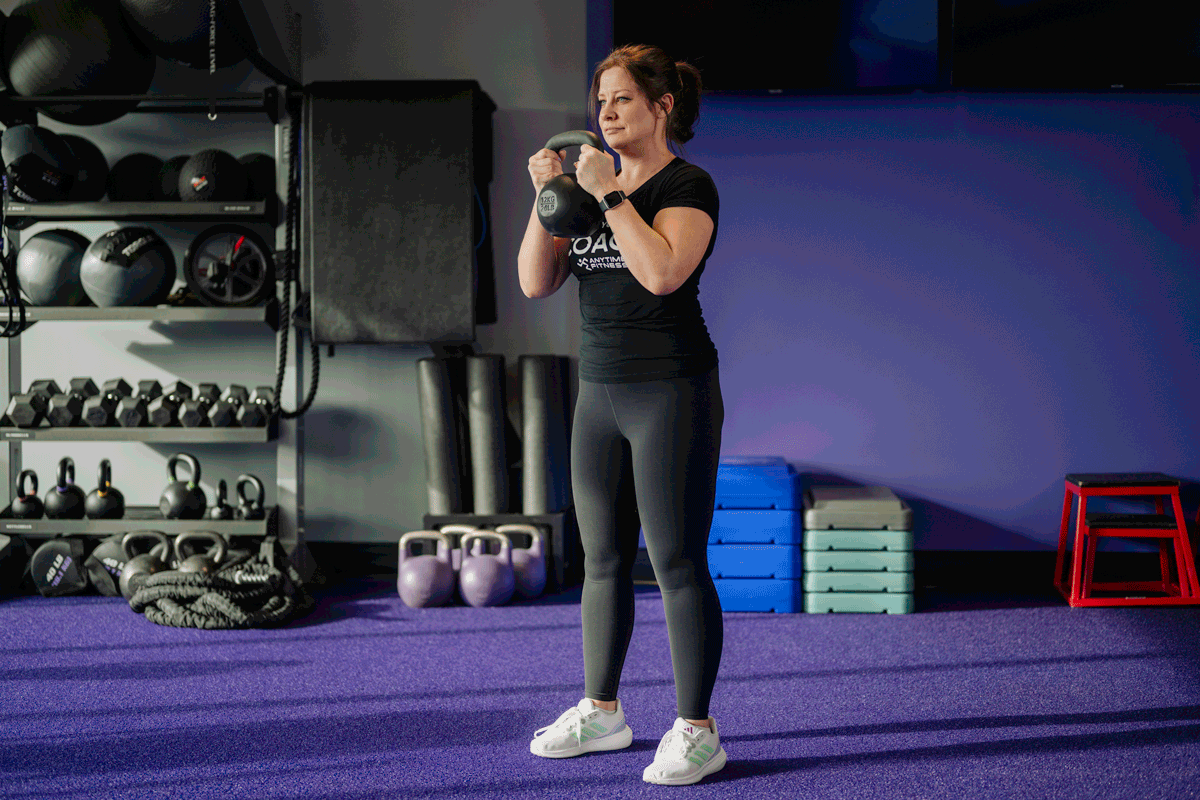
How to:
- Start in a shoulder-width stance, holding the kettlebell by the horns with your elbows down.
- Hinge your hips back and down while bending your knees.
- Push through your heels to return to the start position.
- Keep your back flat and head up throughout the movement.
Kettlebell reverse lunges
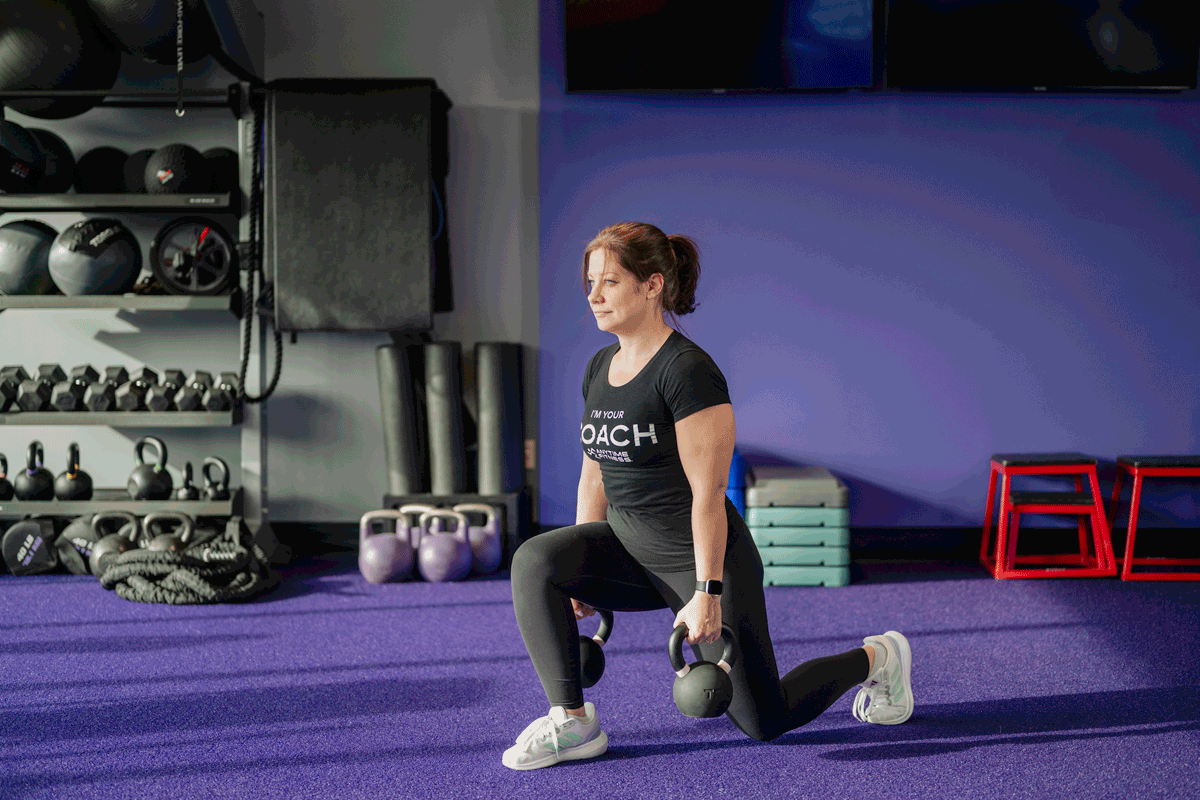
How to:
- Stand upright, holding one weight in each hand by your sides with your arms straight.
- Step one foot backward, dropping your back knee toward the floor with your weight on your front leg.
- Push off your front foot and return upright to the start position.
- Step back with the other foot, dropping this knee.
Superset 2
Muscles worked: Glutes, hamstrings, traps, lats
Barbell deadlift
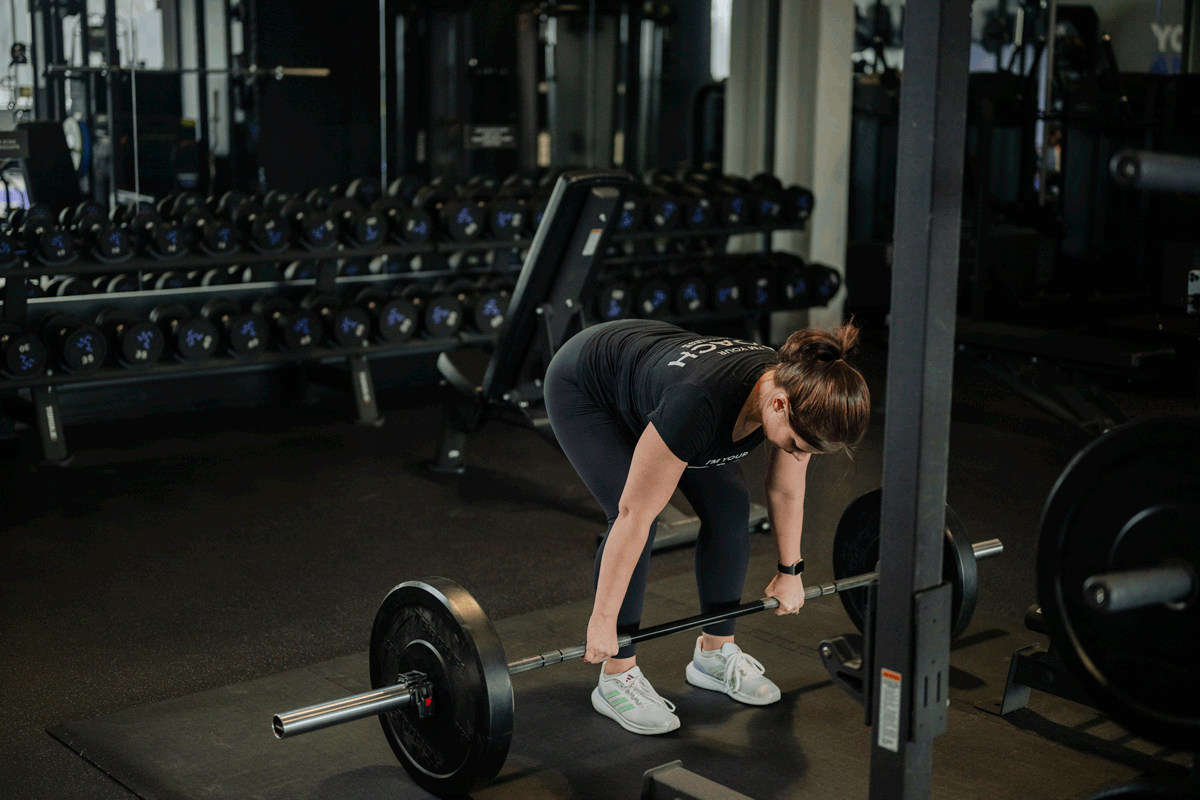
How to:
- Start with a shoulder-width stance with the bar lined up over your feet.
- Hinge your hips back and flex your knees slightly.
- Grab the handle of the weight with a flat back and straight arms.
- With your shoulders back, drive your hips forward to lift the weight off the floor.
- Come to an upright position.
- Lower the weight by hinging your hips back.
Kettlebell swing
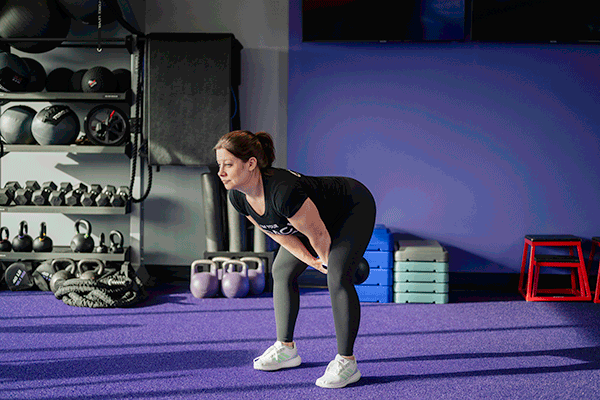
How to:
- Squat while holding a kettlebell between your legs. Use both hands and keep your arms straight.
- Thrust your hips forward, swinging the kettlebell out and up to just over shoulder height with your arms straight.
- Allow the kettlebell to fall forward, guiding it back down along the same path, and repeat.
Superset 3
Muscles worked: Lats, traps, rhomboids, posterior deltoids
Barbell row
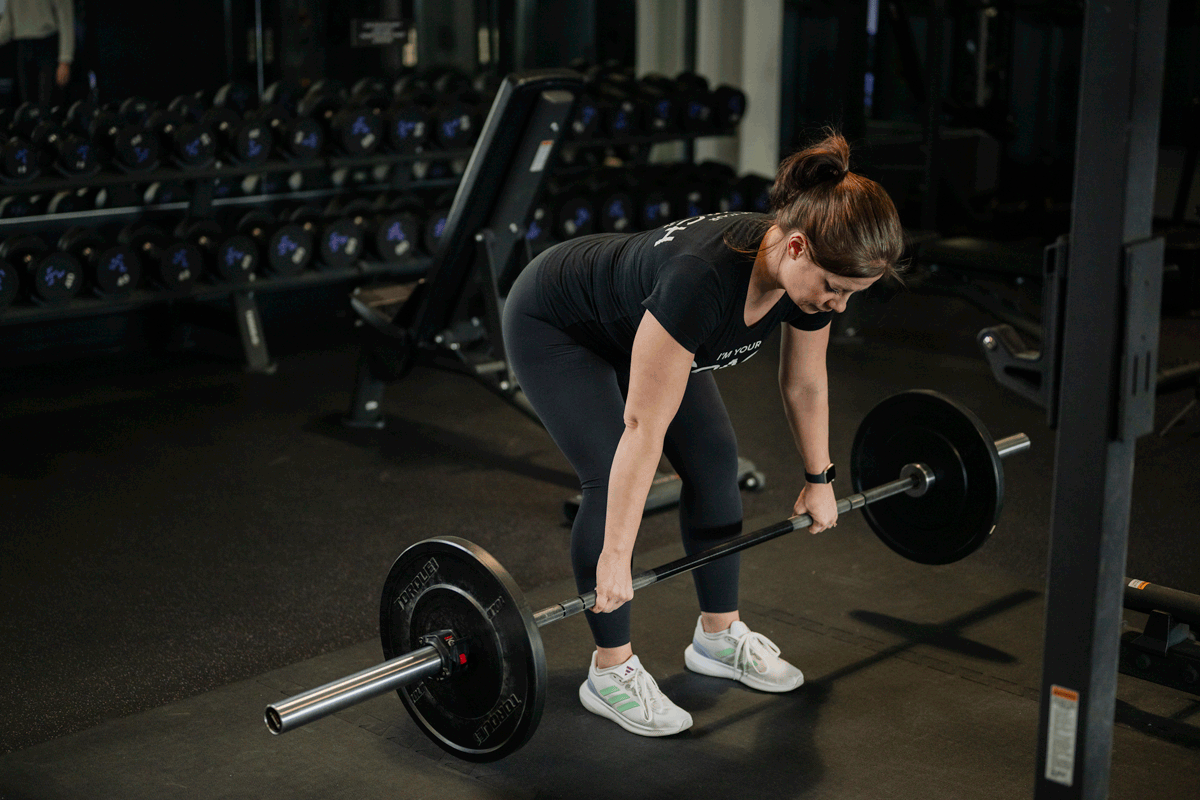
How to:
- Bend forward at your waist with your knees slightly bent and your back flat, holding a barbell with your arms straight.
- Lift the barbell up to your chest, bending at your elbows.
- Lower the barbell back to a straight arm position, keeping your back flat throughout.
TRX row
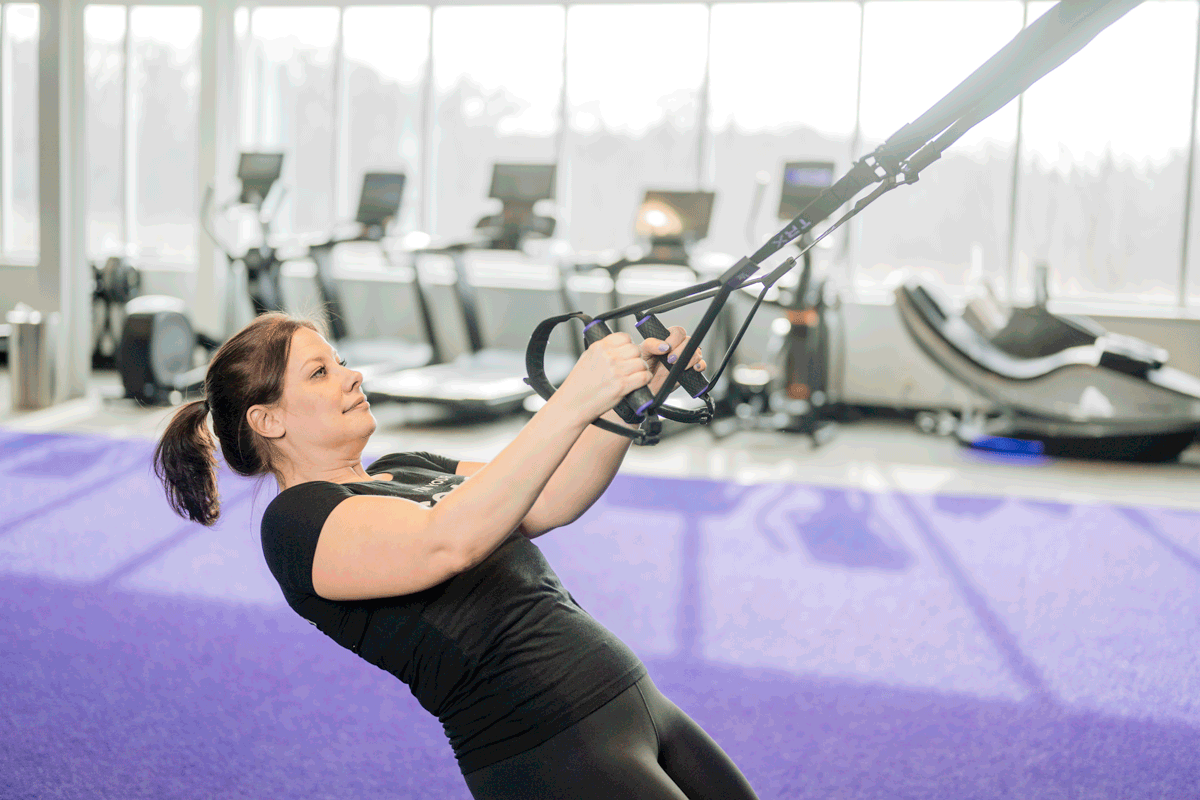
How to:
- Lie back, holding the TRX handles with your arms. Keep your body straight and your heels on the floor.
- Pull your chest up to the handles, bending at your elbows. Keep your body straight throughout and avoid swaying or arching your back.
- Slowly lower your body back to the starting position.
How long does it take to build muscular endurance with a strength routine?
Developing muscular endurance can take weeks or months, but progress happens during every rep and set.
If you’re following a linear periodization program — focusing on a single type of training for all of your workouts within a week — start with a four-week endurance phase. Increase this phase to six or eight weeks if you’d like to see even more progress in your endurance before moving to hypertrophy training.
If your program follows an undulating periodization format — alternating between stability, endurance, and strength within the same week — you can perform muscular endurance workouts indefinitely. It may take longer to improve your muscular endurance if you only train to increase it once per week, but you’ll also address other fitness goals such as stability and strength throughout your weekly workout program.
A final word on muscular endurance exercises
As with any health and fitness goal, it’s important to be patient with yourself and your body as you work to build muscular endurance. Remember that increasing your stamina with muscular endurance exercises takes time, but it’s an investment in your overall performance and general fitness that will help you train better, longer.
More strength endurance training tips
Questions about how to build muscular endurance? Get personalized training, nutrition, and recovery tips from our expert Coaches — schedule a free session with a Coach to get started.
